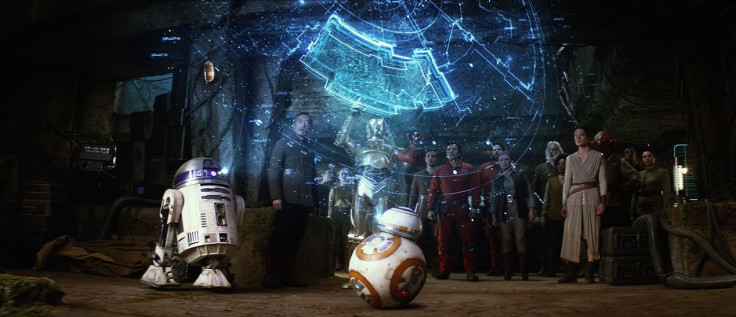The dawn of the cheap thumb drive has narrowed the arms race in industry convention schwag to a single metric: is your company going to fork over a logo-emblazoned USB stick with four, eight, or, saints be praised, 16 GBs, or are you one of those piddling cheapster corporations handing out two GB thumb drives with barely enough room for your bloated infomercials and PDFs? Thumb drives — even those durn two giggers clogging my desk drawer — defeated pens and notepads and stickers and fridge magnets in the schwag wars because they can do and be anything. Once we delete all the corporate gunk a thumb drive becomes our own private mini-memory, on to which we can etch data in all its expansive configurations. Thumb drives are awesome. But will they dominate the plots of every Star Wars movie from now on?
Our visual vocabulary for information has been impoverished by the increasing digitization of everything. Spy movies are no longer about microfilm, no plots turn on paper documents and the safe-cracking kit is gathering dust on the shelf at home. All James Bond needs these days is his Sony Ericsson phone and a thumb drive to plug into the enemy’s computer. Our new cliche for tense technological thievery is a scene where our hero anxiously watches a progress bar (our review of Snowden) Even Star Wars: The Force Awakens was mainly about two armies chasing after a thumb drive with a holographic equivalent of a map .jpeg leading to Luke Skywalker.
The next Star Wars movie, Rogue One: A Star Wars Story, is all about stealing the plans for the Death Star. What form will these plans take? Will they just be snatching Darth Vader’s thumb drive off of a desk and stashing it in some droid again?
These new character posters illuminate the Rogue One cast of characters with schematics from the Death Star:
Jyn Erso. A checkered past. A greater cause. #RogueOne pic.twitter.com/w8UfQQ3Jwo
— Star Wars (@starwars) October 17, 2016
Cassian Andor. An intelligence officer for the Rebel Alliance. #RogueOne pic.twitter.com/m6WsfTcysf
— Star Wars (@starwars) October 17, 2016
Chirrut Îmwe. A warrior monk with faith in the Force. #RogueOne pic.twitter.com/xyMcbhRI7E
— Star Wars (@starwars) October 17, 2016
Baze Malbus. Soldier. Friend. #RogueOne pic.twitter.com/5lh4XA41mD
— Star Wars (@starwars) October 17, 2016
Bodhi Rook. Former Imperial pilot who's seen the light. #RogueOne pic.twitter.com/9fBQYqUah7
— Star Wars (@starwars) October 17, 2016
K-2SO. Reprogrammed to fight the Empire that made him. #RogueOne pic.twitter.com/W4N9k0foUM
— Star Wars (@starwars) October 17, 2016
Saw Gerrera. Resolved to win the fight against the Empire. #RogueOne pic.twitter.com/UBGl6chfcg
— Star Wars (@starwars) October 17, 2016
Director Orson Krennic. Cruel. Brilliant. Obsessed. #RogueOne pic.twitter.com/ULlAMuxlct
— Star Wars (@starwars) October 17, 2016
Presumably the Star Wars galaxy projectors are not compatible with USB.



















